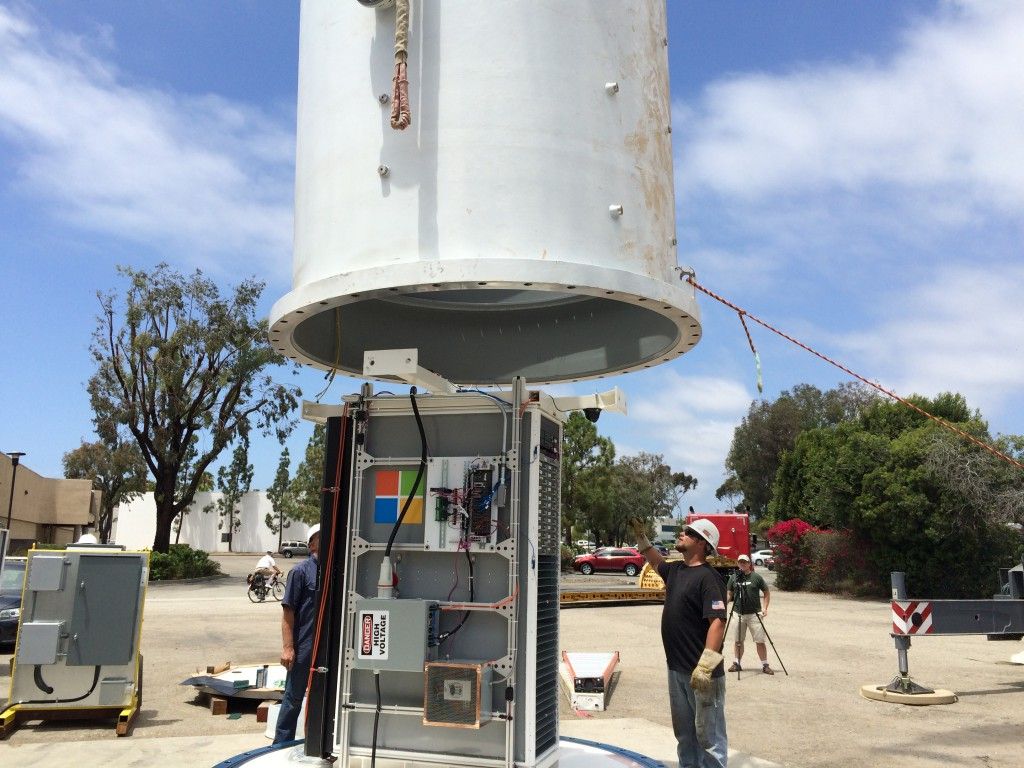Some day in the near future, when you save your data to the cloud, it might actually get stored underwater.
This week, Microsoft unveiled Project Natick, the company’s initiative to rapidly deploy efficient, low-cost data centers -- by submerging them. The first pilot, named Leona Philpot after the Halo video game character, operated underwater for four months last year at a depth of 30 feet off the coast of California.
A major challenge with underwater placement of data centers is that they could be flooded if there’s a leak, or the equipment could be damaged in a strong storm. There are also potential environmental concerns and technical issues related to working in the ocean.
But while it may sound far-fetched, the technology isn’t entirely new. Submarines have been safely transporting expensive electronic equipment for decades. Plus, if a company like Microsoft can perfect the technology, it stands to see a huge payoff in the form of drastically reduced energy bills.
“This is speculative technology, in the sense that if it turns out to be a good idea, it will instantly change the economics of this business,” said Norman Whitaker, who heads special projects for Microsoft Research NExT, in a company news story.
The ocean water serves as a natural refrigerator for the data center, which the tech industry collectively spends billions of dollars each year to cool on land. Data center operators are increasingly looking to improve energy management and adopt renewables to save money. The naturally cold environment removes the need for expensive chillers, offering immediate cost savings.
Energy efficiency isn’t the only benefit of an underwater data center. Downloading, browsing and gaming are faster the closer the host data center is to the people using it. Roughly half of the world’s population lives 120 miles from the sea, so moving the data center into the water and closer to consumers could improve performance. Locating the center closer to users also means that Microsoft can make the fiber-optic connector cable much shorter, which saves on cost.
In addition, a submersible data center doesn’t need to accommodate any people. No kitchen, no desks, no lights and no oxygen necessary. That allowed the engineers to build a data center that’s very compact.
Because there is no staff, the data center also had to be self-sustaining. The ultimate goal is to make computing hardware that can be stored underwater, without supervision, for 20 years or more. Eventually, Microsoft engineers want to harness marine energy so that the center can be even more independent.
There’s also no need for permits and leases underwater, which drastically cuts construction and deployment time. A typical land-based data center takes takes two years to build. The capsule for Leona Philpot was built in just 90 days.
The 38,000-pound data center submarine is made up of a big steel shell containing a rack of data servers, with the equivalent computing power of 300 desktop PCs. The servers are attached to a control system and surrounded by pressurized nitrogen that helps to remove heat from the chips.

Even if submerged data centers don’t proliferate right away, the underwater project stands to benefit data centers on land.
“We’re learning how to reconfigure firmware and drivers for disk drives, to get longer life out of them. We’re managing power, learning more about using less. These lessons will translate to better ways to operate our data centers. Even if we never do this on a bigger scale, we’re learning so many lessons,” said Peter Lee, corporate vice president of Microsoft Research NExT.
However, the plan is to try to build bigger. The Microsoft team is currently planning phase two: a vessel four times the size of the current container with 20 times more computing power. Researchers are also evaluating test sites where they could deploy the underwater capsule for at least a year, coupled with a marine renewable energy source.
“It’s not a moonshot in the sense of some outlandish thing,” said research engineer Spencer Fowers. “It’s actually a viable product we could make.”



